The ninth generation of the hugely popular Pokémon franchise released on November 18th 2022 for the Nintendo Switch. It marks the first open world title for the series, and is the first to offer a more extensive multiplayer experience. Up to three other players can join in online modes. Ever since Pokémon Legends: Arceus released back in January, I have been excited by the possibilities of a game in a similar vein, but with the core features of the series I have known since I first became a fan back in 1999. Could generation nine, a massive departure from the past games I played on the Game Boy and Nintendo DS, which were joyous experiences that have been embedded into my life, truly match my expectations? I had the privilege to review Pokémon Scarlet, and take a deep dive into a game I had been counting down the days for, ever since it was first announced.
I played Pokémon Scarlet roughly 90% of the time in docked mode, using Version 1.0.1 of the game. Since we are sharing this post-launch, this review will contain some light spoilers.

Pokémon Scarlet
Nintendo Switch
Developed by GameFreak
Published by Nintendo
Released: 18th November 2022
Digital copy provided by Nintendo UK
Pokémon Scarlet takes place in the vast open world of the Paldea region, a landscape stretching as far as the eye can see. It’s filled with forests, mountains, lakes, and deserts, populated by creatures we know as Pokémon. Humans also live here, in towns and cities bustling with shops and eateries to explore. At its heart is Mesagoza, the largest city in the region. It’s home to the Naranja Academy, where students from a range of age groups come together from different areas of the land to study all there is to know about Pokémon. Just a short journey away is the small town of Cabo Poco, and the character’s home, where your journey begins.
Before you take your first steps into Paldea, you have the opportunity to create a character, and Scarlet offers greater customisation options than previous titles. Not only do you choose whether you play as a boy or a girl, you can also customize your hairstyle and facial features in a variety of different styles and colours, be it masculine or feminine. Pokémon has certainly come a long way from the days of Red & Blue, where you could only play as a boy, and I am happy that players now have more control over how their characters look, and I hope GameFreak will continue to build on this in the future.
Once you’ve chosen your appearance, and watched a fun opening cinematic featuring a certain mysterious Pokémon, the game begins with your character in their room at home about to start their first day at school. It’s here where we are introduced to one of the game’s major characters, Academy Director Clavell, who is happy to personally escort you to the school. Once you’re ready to leave, you will be shown three partner Pokémon to choose from: the grass cat Sprigatito, the fire croc Fuecoco, or the duckling Pokémon Quaxly. For my playthrough, I picked Quaxly, which was decided from the moment I first saw it when the game was first revealed. Whichever one you choose, your starter will hopefully become an asset to you on your journey.

Shortly after, we meet the second major character of the game, Nemona. She happens to be your neighbour, the president of the Academy’s student council, and a Champion-ranked Pokémon Trainer! Certainly someone who would be worthy of becoming your rival, eager to battle you at every given opportunity. Nemona will also choose one of the remaining three starters, that is naturally weak to the starter you choose, while Director Clavell will select the remaining Pokémon for himself. Nemona will then suggest a battle, and agree to escort you the rest of the way to school.
Along the way, a strange cry will be heard, and Nemona will ask you to investigate its source. It turns out that the sound is coming from the mysterious Pokémon you saw in the opening cutscene, washed up on a nearby shoreline, and in bad shape. This Pokémon is known as Koraidon. After helping it out by feeding it a sandwich, it will offer its help in return, supporting you on your adventure by letting you ride upon its back, becoming an essential partner to navigate the world more easily.
In terms of controls, pressing X will let you access the main menu, where you can view your Pokémon, inventory, online features and other options. Selecting Y will bring up the map, letting you zoom in and out, set destinations, and explore in more detail. The minus button lets you view your Pokédex to see how many Pokémon you have caught, a list of recently battled monsters, and helpful notes. Finally, pressing right on the pad will display notes such as the amount of time remaining on buffs.

Like every kid, where would you be without your trusty phone? Your character’s mother will give you a Rotom phone, that lets you take pictures and selfies throughout your adventure, with a range of filters, poses, and effects to choose from. Simply press down on the D-Pad while playing to take out your camera. I had lots of fun with the phone camera, taking many pictures of me and my friend’s characters, Pokémon, and environments. I was disappointed that you couldn’t use your camera everywhere, it would appear that buildings are strictly off limits. Additionally, my character could perform fourteen different poses outside of camera mode than in selfie mode (accessed by pressing up on the D-Pad), compared to the measly six you could choose from in selfie mode. While I won’t hold my breath, I would like to see more of them added post-game.
Within the first couple of hours, you will make your way through the early routes and towns by riding around on Koraidon, and enroll into the Academy. It’s a huge area divided into different classrooms where you can take classes, which provide helpful information across a variety of different subjects. For example, Math teaches you how to calculate type-based damage, and Battle Studies will explain the benefits of Meal Powers. Each class will consist of three lessons, followed by a midterm exam, and a further three lessons ending with a final exam to test your knowledge. Passing exams will reward you with experience candy, used to level up your Pokémon. If you want to refresh your memory on anything, you can revisit a class at any time.
Exploring the Academy more fully, and sparking up conversation with students and teachers across different social areas of the building such as the cafeteria and dorms, can provide lots of useful information and tips, and highlight some great character development and storylines that help you learn more about them, which open up further as you progress your journey allowing you to build up relationships between you.
Lessons and social aspects of the game are pretty much optional, and aren’t required to complete the game, but are something that I would highly recommend. During my playthrough, I didn’t take any classes, or speak to anyone within the academy, opting to go out and explore the world instead, leaving it until the very end of the game to experience. However, I deeply regret not being introduced to these characters sooner, and feel that I would have had an easier time if I had progressed the content within the academy throughout my adventure. The lessons also highlighted just how educational Pokémon can be, especially when it came to mathematics and probability and percentages. The languages course had very little connection to Pokémon at all, but provided a taste of communicating in a different tongue. It was also the place to bring some storylines from throughout the adventure to a close, and may have hinted at content yet to come.

Battling trainers and catching Pokémon are a staple of the series ever since the beginning, so I will refrain from repeating myself here, but there are some additions that are worthy of mentioning. For example, some returning features from Pokémon Legends: Arceus, where you can sneak up on a wild Pokémon from behind to startle it and catch it off guard, giving you an advantage in battle. Crouching will make it harder for a wild Pokémon to notice you, and it gives you an extra opportunity to land an attack, or entirely prevent them from attacking first if you’re able to catch it. Locking on returns from Arceus too! Pressing ZL, you can lock on to target it specifically, letting you select specific Pokémon to battle, or to discover information about it if you previously caught one. I felt this feature was a little finicky however, as it requires you to focus the target Pokémon to the centre of your screen. This was not as tricky to use in Legends Arceus, and didn’t require the player to be as precise, making this a disappointing downgrade.
In previous games, getting into the line of sight of a trainer in the overworld always triggers a battle, sometimes when you least expect or need it. Scarlet introduces a change where you have to go up to a trainer and speak to them in order to initiate a battle. There are some benefits to fighting trainers, such as gaining monetary rewards, Pokémon experience and Pokédex data. You can even fight X number of trainers on a route to collect a small prize from Pokémon League reps that appear near some Pokémon Centers. This means that theoretically, you could play through the entire game without ever facing one of these NPC characters in battle, excluding your rival, gym leaders, etc.
In prior generations, you had to interact with a Move Reminder to relearn moves a Pokémon had previously learned, or even visit a Move Deleter to make room for others. I’m overjoyed to see another neat feature return from Pokémon Legends: Arceus, where all of this can be done from the Pokémon’s summary page. If you don’t like the move you’ve learned, or you need to return to an old one, simply swap it out and change up your Pokémon’s move set as much as you like, including any TM’s the Pokémon has been taught. This was the number one feature and quality of life improvement I wanted to see come back, and I got my wish! This must always be a feature in every future title from this point forward.

I want to squeeze in a mention of three brand-new features. The first is where you can request advice on what moves to keep or change, which appears when learning new moves. While this feature isn’t something that I found particularly helpful, it could benefit newer players, or those not as familiar with Pokémon move sets. Besides, if you make a mistake, and you don’t find the advice helpful, you can always change it back!
Secondly, the Auto Heal option, which can be selected from going to your party and hitting the minus button, will fully replenish your Pokémon’s health at the touch of a button, providing you have enough healing items. The game will analyze your bag’s contents, and prioritize the smallest and cheapest items first. I was disappointed and puzzled to discover that the game wouldn’t allow you to revive fainted Pokémon, or even clear a status effect such as sleep or paralysis. While it’s a welcome and sometimes convenient feature, it feels like a half step that could have been utilized better.
The last new feature for the game I want to mention here is ‘Let’s Go’. This lets you send out a Pokémon to auto-battle wild ones, without having to take commands from its trainer, to collect materials, and obtain experience points. It can be activated by pressing the R button, which will send out the first Pokémon in your party. While a Pokémon is in battle, your character can continue doing whatever it wants.
I discovered that the Let’s Go feature was best used to gather materials, rather than gain experience, as it was faster to level up my Pokémon by battling them directly. It can be a helpful feature if you are hoping to find rare shiny Pokémon, which won’t be attacked automatically in this feature. This was a concern I first had when I heard about ‘Let’s Go’, given the desirability and rarity of them. Mass outbreaks of Pokémon are an ideal time to use the Let’s Go feature, as encountering numerous Pokémon, some of which can be quite rare, is an opportunity to gather materials en masse. You will be notified when a mass outbreak is occurring, and they can be found on your map for you to investigate.

After encountering a few trainers and wild Pokémon, it’s probably wise to rest up and replenish your Pokémon’s health. Pokémon Centers are much more present around Paldea, and can be spotted from long distances due to their bright rotating signs. The nurse will occasionally give helpful tips, so it’s worth listening to her sound advice. They should always be a priority to visit when you see one, as they act as fast travel points from your map to get back to more easily later in the game. Poké Marts now allow you to combine your purchases into one transaction, letting you buy a variety of items at once, providing you have the cash of course! Before you complete the purchase, a receipt will be shown, and a total cost before you buy them. I found this super helpful.
While Pokémon Centers and Poké Marts have occupied the same space for a while now, the inclusion of a TM (Technical Machine) Machine – Yes, it’s called the Technical Machine Machine – is new, and lets you create new moves for specific Pokémon from materials you’ve collected. You can also use the TM Machine to exchange materials for League Points, a currency that can be acquired through a variety of different ways through the game, and can be used as a second currency to buy more things.
Finally, the Union Circle is a feature found at every Pokémon Center that allows for other players from nearby or far away to connect to, and appear in your world. Together you can roam around and catch Pokémon, and do everything you would normally do during solo play, with the benefit of trading Pokémon, battling, and taking part in Tera Raid Battles, something I will expand on shortly. The Union Circle can also be accessed via the Poké Portal at any time, an option from the Main Menu that lets you connect to other players and online services, such as battles, trades, and Mystery Gift opportunities.

You can choose to battle other players in single and double battles, or as a four player group in a two vs two double battle, with capped and uncapped levels. Trading has also had an improvement, where some Pokémon housed in boxes will be highlighted and bounce up and down if your trading partner doesn’t have them, allowing each of you to make better informed choices about what you each need.
The addition of co-op play with friends, where we could enter each other’s games and interact with one another across the internet, is something I’ve wanted for a very long time. While co-op play was first introduced in Pokémon: Let’s Go Pikachu & Eevee, it was a local experience that I wasn’t able to take part in, so to finally have it was fantastic. Unfortunately, there were still limitations on this gameplay feature that I felt could have been expanded on, such as the ability to fight NPC trainers 2 on 1, just like you could in Let’s Go Pikachu & Eevee on the same hardware just a few short years ago. I have to wonder what a truly co-operative Pokémon could be like, where you battle side by side with friends and take on gyms, catch Pokémon together in the wild, and fight the Elite Four as a team, scaled to match the number of players joining you. Maybe this will be the first step towards this becoming a reality in the future? Aside from some technical issues I will cover later in my review, the online play didn’t falter, and performed above expectations.
Terastallize (Tera for short, also known as the Terastal phenomenon) is a battle mechanic introduced in Pokémon Scarlet where Pokémon can gain an additional type called a Tera type, adding a third type offensively, and replacing the original typing defensively. Although it is temporary, it can give trainers an edge in battle, and it gives their Pokémon a crystal-like appearance. Terastalized Pokémon will have a jewel above their head to indicate what Tera type they are, and it lasts until the battle ends, or the Pokémon is knocked out. Its source came from an area of the Paldea region called Area Zero. Some trainers carry Tera Orbs, which allow them to Terastalize any Pokémon. You are given a Tera Orb by Nemona, and it can be used on any Pokémon you have, but it is limited to a single Pokémon once per battle. After it has been used, you must visit a Pokémon Center or a Tera crystal to replenish it.

On a side note, you can currently obtain a Flying Tera Type Pikachu as a pre-order bonus, until February 28th 2023. Once again, you can access the Mystery Gift feature by navigating to the Poké Portal from the main menu.
Wild Tera Pokémon can also be found, allowing you to encounter a Pokémon with a different typing than usual. You will be unable to catch the Pokémon until you’ve depleted a large majority of its health, which will break the Terastalization, and revert it back to its original form. Catching it will allow you to use it in battle.
You are also able to encounter much stronger Tera Pokémon in Tera Raid battles, which can be found by visiting crystals dotted around Paldea. You can take them on single-handedly, or by teaming up with friends locally or online. Tera Raid Battles require you to defeat a Tera Pokémon inside special dens within a time limit. If your Pokémon is knocked out, it will be revived, but the time between being knocked out and being revived increases each time you are defeated. There will also be a time penalty, reducing the time you have to catch the Tera Raid Pokémon. If your time runs out, the entire team is blown out of the den.
Special actions known as cheering can boost the stats of Pokémon. It can increase their attack and defence, as well as heal up your team’s Pokémon, up to three times. It’s important that everyone keeps an eye on each other, and works together. It’ll be worth the effort, because catching or defeating a Tera Raid Pokémon will net you some nice rewards, which increase depending on the star rating of each raid.
Raids with ratings between one and four will be available during your initial play through, with five-star raids being unlockable in the post-game. Six and Seven-star Tera Raids, the latter equating to Level 100 Pokémon, are also possible; but they will require exceptionally high leveled Pokémon and friends to team up with if you wish to increase your chances of defeating them.

While the objective of Pokémon Scarlet is similar to its predecessors, in the sense that you catch Pokémon, battle trainers, and grow stronger to become a champion, there are now additional goals to achieve, and greater flexibility in how you complete them. The premise of the game is that each student enrolled at the academy will take part in a special independent study project called ‘The Treasure Hunt’. They are encouraged to explore the world and seek out their own personal treasure, which includes three different storylines for players to challenge.
First is the Victory Road path, the traditional story of battling eight different gym leaders who specialise in using a specific type of Pokémon, and can be approached in any order. Each gym has its own unique challenge prior to battling the leader, such as hunting down ten Pokémon known as Sunflora, or rolling a gigantic olive through an obstacle course. Upon defeating the leader of each gym, you will be awarded a badge to prove your commitment, as well as a cash prize and award for doing so. You will also be allowed to use Pokémon at a higher level without them disobeying you, and wild Pokémon will become easier to catch.
Compared to other games, I felt the Victory Road path was a little boring. Some of the challenges prior to battling the leaders, specifically the water gym leader where you have to return his wallet and bid on an item, felt like a pointless prerequisite; and while the game claims you have the freedom to take on the gyms in any order, this is not quite true as you cannot make significant progress in other areas of the game until you’ve beaten nearby ones, especially when your Pokémon will disobey you without the right number of badges. I was also disappointed to find that I couldn’t re-battle the Elite Four after beating them, something that players haven’t been restricted to in the past.
The second path is the Starfall Street path. Here, you will be tasked with bringing down five bases controlled by Team Star, who appear to be delinquents that are skipping school and causing trouble. You must challenge a trainer guarding the entrance of each base before taking them on, and once inside, you will make use of the ‘Let’s Go’ feature to faint a total of thirty Pokémon in less than ten minutes. Once you’ve done this, you will face the leader of each Team Star base, and defeating them will make them surrender their badges to you. After you’ve done so, you will be able to watch cutscenes and learn about how Team Star came together.
Sadly, I struggled to enjoy the Team Star path, with its repetitive and boring gameplay that is copied and pasted onto each of their five bases. The time limit of ten minutes is absurdly long, and doesn’t provide any meaningful challenge, as it can be done in less than two minutes each time. Even those who could struggle with the game would surely complete this task in less than half the allocated time. Of the three paths, this was by far my least favourite, redeemable only by its story, for which I have lots of praise. The plot line for Team Star, its characters, and the way it unfolds throughout the game was wonderful.
Last but not least, is the Path of Legends storyline, where a character called Arven is seeking to obtain a rare plant called Herba Mystica, a special Paldean flora with some useful properties to enhance a Pokémon’s stats. Five gigantic Pokémon known as Titans are protecting the location of these herbs, and Arven will task you to bring them down. Once a Titan is defeated, it will run away to the location of the Herb Mystica and consume some, becoming more powerful as a result. Arven will then team up with you in a double battle to defeat it. After, Arven can create sandwiches, unlocking new abilities for Koraidon, helping you to navigate Paldea more easily.
The Path of Legends was my favourite of the three paths, as it introduced me to brand-new Pokémon, and a fantastic, wholesome story which made me look at Arven in a different light. It’s also a recommended route to take as soon as possible, so Koraidon can learn the necessary abilities to navigate Paldea more easily, such as climbing, gliding and swimming.
Of course, you’re also encouraged to complete the Paldean Pokédex, by exploring the entire region to catch, evolve and then trade with friends, eventually reaching an impressive four hundred Pokémon! For every ten entries, the player will receive a small reward by accessing the Pokédex page and pressing X. In the early stages of the game these items could be useful, but I would have much preferred to receive some cooler and more unique items such as special clothing or accessories to show off my achievement. One good suggestion I heard from a friend was if by collecting 151 Pokémon, you could wear Professor Oak’s lab coat, and now I’m saddened that this isn’t the reality!
Speaking of customisation, there are many different clothing options throughout the game, with a variety of headwear, bags, footwear and accessories to purchase from towns and cities you explore. I was disappointed by the game’s reluctance to prevent my character from wearing jackets and trousers, insisting on retaining the school uniform, which I feel looks pretty ugly.

This is probably a good time to touch on the picnic mechanic of the game a little more. In addition to clothing stores, there are also places where you can buy ingredients for sandwiches, edible during picnics. Use these ingredients to prepare a sandwich, and receive Meal Powers, which include raising the likelihood of finding small or large Pokémon, a higher prospect of catching Pokémon, and even a higher chance of finding shiny Pokémon! For example, my first sandwich gave me a greater chance of finding Fighting Pokémon, more effectiveness against Ghost types, and Bug type Pokémon had a better opportunity of dropping items upon defeat. Restaurants across Paldea can also offer food with special Meal Powers, so it’s worth checking those out too. Sandwiches can be selected by Recipe mode where ingredients are selected automatically for you, or Creative mode to make a custom one.
Picnics can also be enjoyed locally or online with friends, where benefits can be shared. I had a ton of fun creating sandwiches with friends in this mode, especially when food items would fall off the bread, and playful arguments would break out over people’s inability to make sandwiches properly. This resulted in losing specific benefits, but could potentially make a player create a different kind of sandwich all together! It’s safe to say that neither me nor my friends would be able to hold down a job at Subway if our results were anything to go by.
Picnics are also the location where the breeding mechanic takes place in Scarlet. This is where compatible Pokémon can breed and leave eggs in a basket, which also works in co-op play, so your friends can receive them too. If you’re aiming to breed a specific Pokémon, it’s best to only include the two Pokémon you want in your party. Other members can only bring their lead Pokémon to a picnic, so it’s best to communicate who will bring which. For example, me and two other friends wanted to receive eggs of the starter Pokémon, so I brought along a Ditto and a Quaxly, while they each brought a Sprigatito and Fuecoco. We each received a few eggs, and took them on our way to hatch, receiving a variety of different starters. It’s also way faster to hatch eggs in this generation, as they hatch within just a few minutes, making it even more desirable for those looking to hatch shiny Pokémon such as the starters.
On the topic of shiny Pokémon, the odds of finding one are about 4000/1, increased to 2000/1 if you complete the Pokédex and receive the shiny charm. These odds are increased even further to 512/1 if you make sandwiches with a Meal Power that betters your chance of finding shinies. In Legends Arceus, if you encountered a shiny, you would get a visual and audio prompt, making it far easier to spot. Unfortunately, this has been removed in Scarlet, which is going to make encountering these special Pokémon even harder, and potentially even more so for those with color blindness.
Once you have completed all three storylines, you will be able to access the final area and story of Pokémon Scarlet, called ‘The Way Home’. It takes place in Area Zero, a gigantic crater in the very centre of Paldea. While I heard about Area Zero throughout the game, I expected I would finally find myself here, but I always imagined it would be a dark underground environment, so I was shocked to find a bright and beautiful paradise with Pokémon roaming around. Aside from my character and several companions tasked with this expedition, it was completely void of human life. Peering over the side of a cliff edge, I saw just how deep the crater actually was, and I realized just how different this post-game was going to be.
The tone of the game shifts to an exciting adventure, with ancient monsters known as Paradox Pokémon. They are based on existing Pokémon fans may be familiar with, but are from ancient times. Seeing them for the first time was quite exciting, and I was thankful that I was able to avoid the vast majority of the spoilers up until this point, making this part of the game much more special. I won’t delve too much further into this, as I want players who decide to play the game the opportunity to enjoy this as spoiler-free as I did. There’s no other way to describe it: Area Zero is the best of Pokémon Scarlet, with a compelling story, bringing together key characters from your adventure so far, and gives them their chance to shine more brightly. One improvement that I would have liked to see in this game, but in this area even more so, is voice acting. I had to stop to read the dialogue while playing, in case I missed anything important.
Once you have beaten the game, you will be given the task of re-challenging the gym leaders and taking part in the Academy Ace tournament, where you have to win four consecutive rounds against a selection of some fairly challenging teachers and students, which can be re-challenged multiple times. Unfortunately, there is no Battle Tower in the game, nor a Battle Frontier, which I sadly expected to be the case.
I invested over ninety hours into this game, completing the Pokédex, explored every bit of story-related content, and navigated every inch of Paldea in its entirety for this review. So it saddens me to confirm that Pokémon Scarlet has countless technical issues, which include poor frame rates, visual glitches, and game-breaking bugs throughout the game at every turn. My Nintendo Switch OLED crashed several times during my play through, disconnecting me from my friends in co-op mode and causing me to lose progress.
Characters, Pokémon and objects could be seen clipping through the ground and walls, with some Pokémon spawning inside walls entirely. The game would also freeze from time to time, or take a while to load, usually during the end of cutscenes, leaving me wondering whether I should wait, reset the game, or simply be greeted by a system crash. The Casseroya Lake slowed down the game so much due to the number of Pokémon spawning, that it was at times almost unplayable.
Moving objects such as wind turbines and windmills were anything but smooth, turning at around five to ten frames per second even at close distances. The flags on top of Team Star bases performed even worse, staying completely still until you were practically standing right in front of them. Another notable example are the flowers at the entrance of Artazon, which didn’t load in until I was literally standing next to them, and flowers and blades of grass in the fields across Paldea would occasionally only load when I was standing right on top of them.
Graphically, the game has some rather poor textures overall, with low quality assets across many environments. The most notable issue I had were the repeated textures seen on cliffs, which broke the immersion and looked cheap. While some towns and cities did look vibrant, they were noticeably scaled back with bland and uninspired buildings, such as the Gym League buildings, and the Elite Four itself taking place somewhere compatible to a corporate office building, compared to the majestic looking Pokémon League buildings of the past. Those featured twisting staircases, flamethrowers and elevators, making this offering look lazy. There was also a bug in the Elite Four and Champion battle themes, which would cause the music to loop the first few seconds repeatedly, and could only be corrected if I saved before the battles. This was later fixed in the 1.1.0 update, almost two weeks after launch, and long after I had completed this part of the game.
Shadows would sometimes disappear entirely depending on how you moved the camera, and lighting glitches would occur very noticeably from time to time, especially when leaving and entering caves, with sudden brightness changes. The game’s camera would also end up in strange positions, sometimes clipping through the ground during battles, or inside walls causing the screen to go black, something I experienced when clicking on a painting in my home literally two minutes into the game. Having said that, there were some redeeming qualities, such as the gym in Alfornada decorated in menu sprites from the first and second generation Pokémon games, and metallic surfaces seen on Pokémon models like Magnemite and Scizor, which stood out most to me.
I also need to give praise to the Pokémon designs of this generation, which I loved. I was a huge fan of Clodsire, Squawkabilly, Toedscool and of course, Lechonk. I was happy to see some classic Pokémon such as Girafarig (Farigiraf) and Primeape (Annihilape) get evolutions after so many years, but was disappointed by Dudunsparce (an evolution of Dunsparce), which seems to have the same effort put into its design, as Game Freak put into the game’s overall performance.

Despite its technical problems, I had so much fun, and loved Pokémon Scarlet, especially with my friends in co-op online. It had some fantastic storylines that I haven’t seen since the fifth generation, and came away from it with high hopes for the future. It was an enjoyable experience that departs from the traditional titles of its past, and retains some great quality of life improvements from Legends Arceus that benefit this first truly open world Pokémon title, and brings us closer to a vision of what I feel Pokémon should be.
But on the other hand, it is quite frankly a disaster in terms of performance, visuals, and basic functionality, that I don’t believe can be fixed to the extent that I would expect. It is by far the worst Pokémon title in that regard, and it doesn’t hold up to the standards of its predecessors, not even for titles released on the same hardware. I can only assume that Game Freak didn’t have the time, or possibly the experience required, to create the game to match their vision. I believe strongly that The Pokémon Company’s thirst for profit and insistence on sticking to their wider marketing strategy caused this game to be released in its deeply unpolished state. I truly hope that TPC completely rethinks this approach in the future, not only so that Pokémon fans can get the game that they deserve, but so the team at Game Freak can have the time and resources necessary to create a title they can be proud of.
Final Rating – 3 out of 5
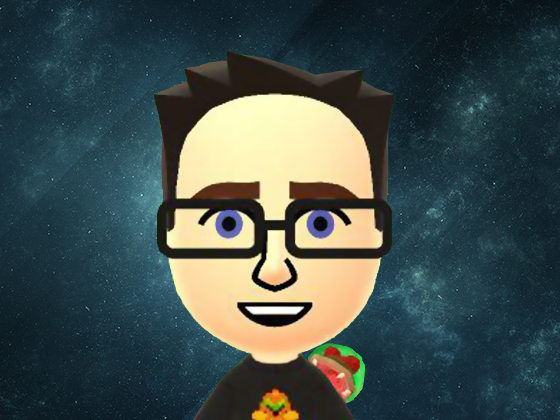
Darren is a huge Nintendo fan from the days of the Gameboy Color and his copy of Pokémon Blue. Over time, he developed a passion for many Nintendo franchises, including Metroid. His favourite system is the Wii.


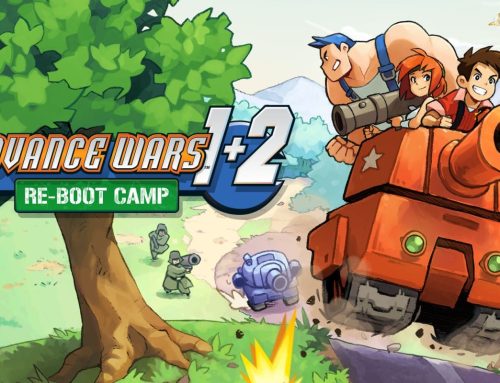
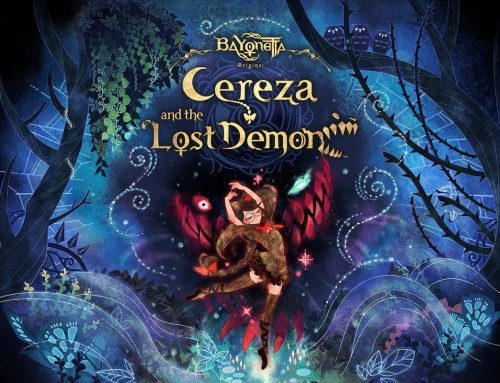
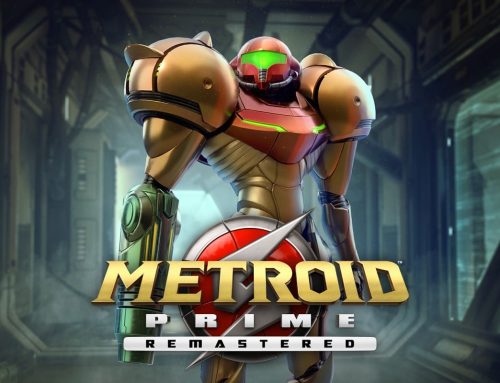
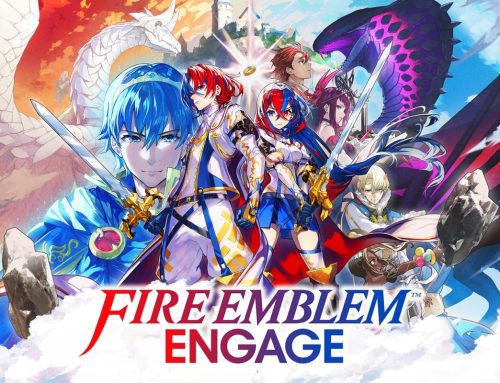
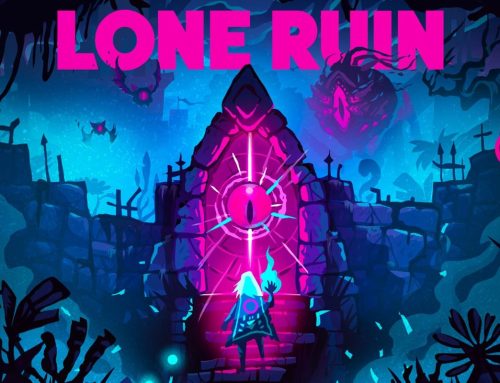
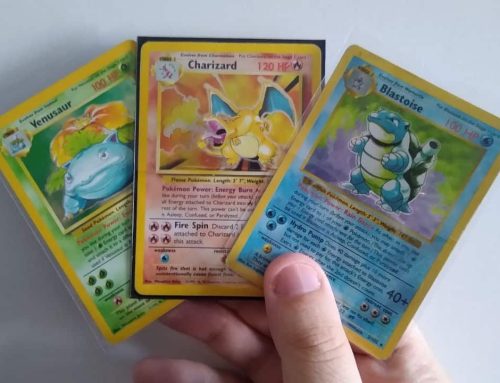
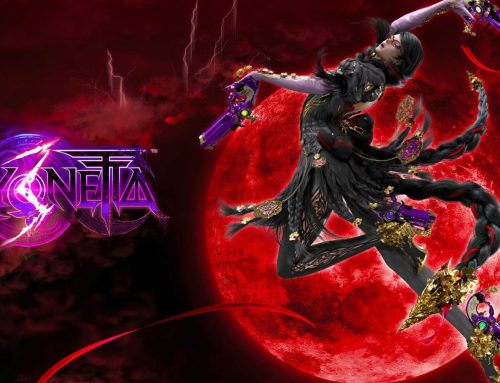
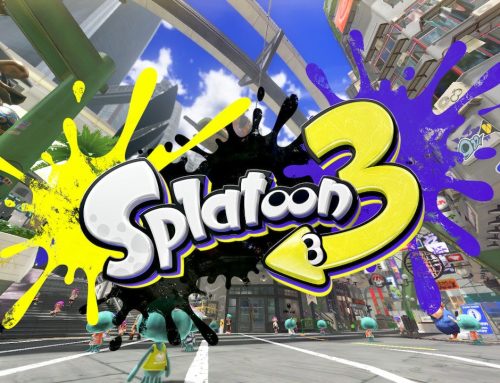
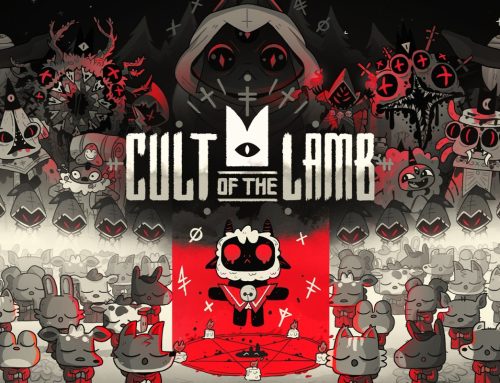

Leave A Comment
You must be logged in to post a comment.